Biking can be much fun, so it’s only natural that everyone wants a slice of the fun!
Unfortunately, if you’re on the heavier side of body weight, you may have found that most standard bikes don’t suit your purpose as they come with weight limits that are typically not over 100 pounds.
This is where electric bikes come in real handy!
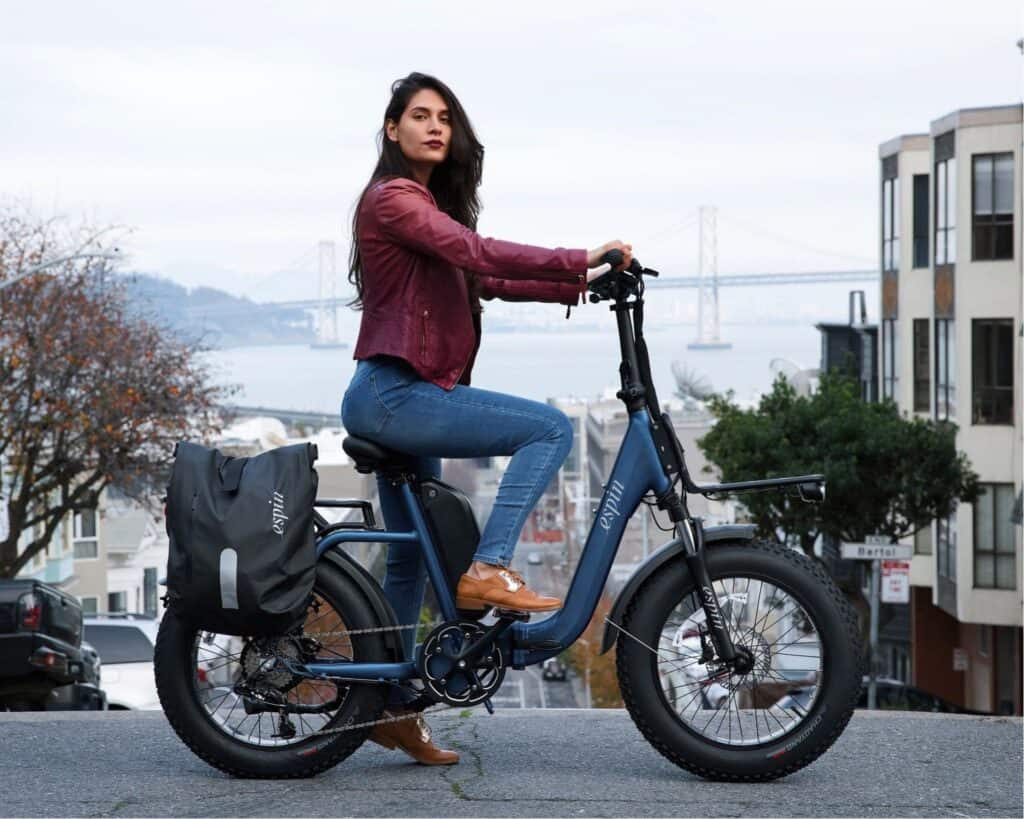
These bikes have weight limits between 300 and 550 pounds and are a great way for heavier riders to start riding while also reaping the benefits of physical exercise.
Here’s everything you need to know about electric bike weight limits, choosing the right electric bike, and how electric bikes can be beneficial.
What Is an Electric Bike?
Unlike a standard bike, an electric bike features a motor that supports the bike’s propulsion.
Electric bikes can either propel you on their own or push you when supported by pedaling (the amount of power generated is based on how hard you pedal).
The most common types of electric bikes include city, gravel, cargo, commuter, road, mountain, and hybrid bikes.
- Road Bikes: Road bikes are meant for paved flat terrain and short distances and are used on conventional bike paths.
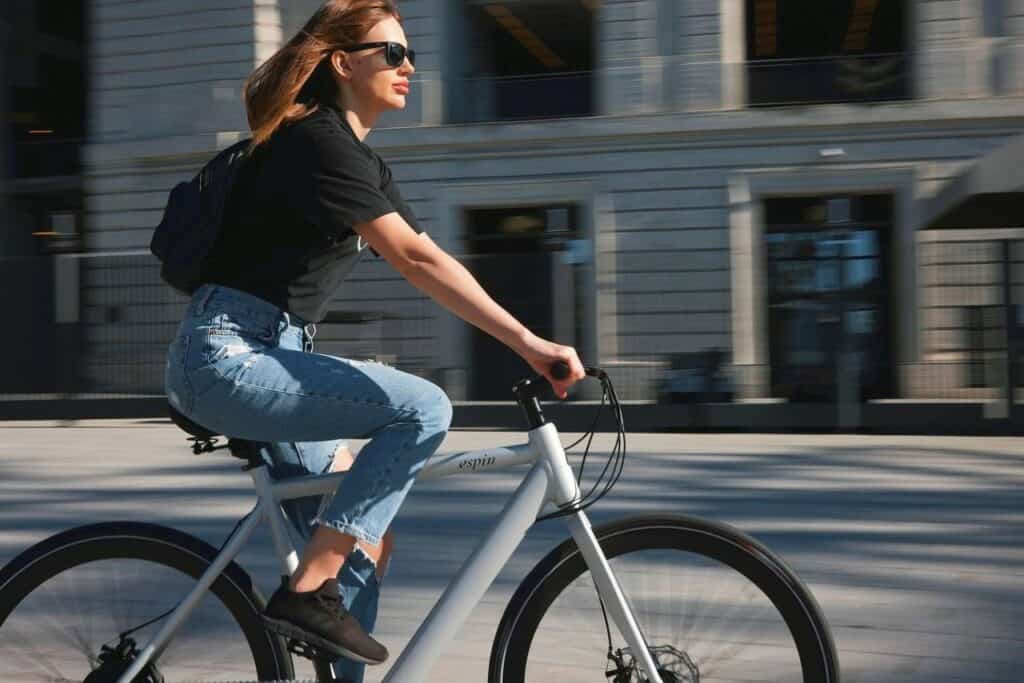
- Gravel Bikes: Drop-bar bikes can be ridden on many different surfaces.
- Commuter Bikes: Commuter bikes are meant for commuting on different surfaces, mostly within city limits.
- Cargo Bikes: These are engineered for those carrying heavy loads along with the rider.
- Mountain Bikes: These bikes are meant for uphill climbs, mountain trails, and a range of different surfaces.

- Hybrid Bikes: Hybrid bikes combine two or more types of electric bikes, making them suited to off-road and on-road use.
Benefits of Electric Bikes
Electric bikes can have tons of benefits:
- Inclusive: Electric bikes are meant for all shapes, sizes, and fitness levels.
Though they’re quite expensive, you can also find several rental shops that lend electric bikes, bike-share systems, and incentive programs that allow low-income individuals to buy electric bikes at affordable rates. - A Great Stepping Stone: Many people dislike the amount of effort that goes into cycling.
For heavier folks, exerting that much effort can be painful and extremely tiring.
Electric bikes, by reducing the amount of effort involved, can get more people, including heavier folks, interested in riding and let them gain enough experience and fitness before graduating to more advanced options. - Less Physically Demanding: Electric bikes are less stressful on the muscles and joints. Not only is this helpful for heavier riders, but it also makes long-distance riding easier.
This can be a huge motivating factor in getting heavier folks started on their fitness journeys.
It’s also a low-impact way to stay healthy, mentally and physically.
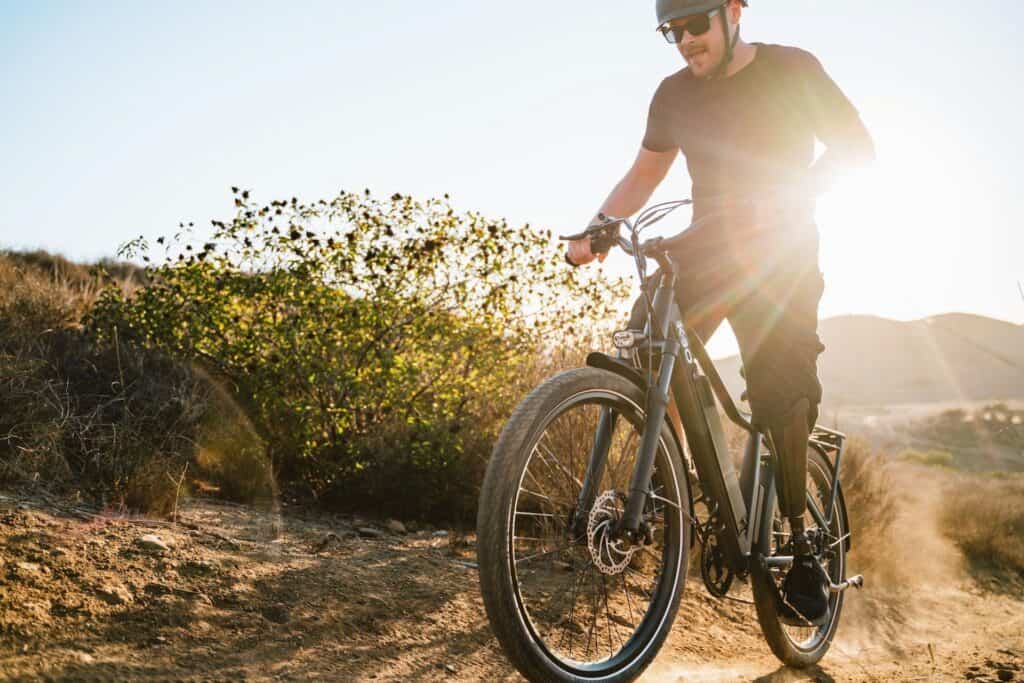
- Moderate Exercise: Though not as strenuous as regular biking, electric bikes still provide moderate amounts of exercise. Because they aren’t as strenuous, even vigorous exercise can feel less stressful.
How Electric Bikes Work
Electric bikes are equipped with motors that support thesupporting pedal movement, allowing riders to enjoy a less taxing ride.
Many people think that electric bikes and motorcycles are synonymous; however, the former runs on a motor and battery, whereas the latter runs on gasoline and a battery.
This makes electric bikes more environmentally friendly as they don’t produce exhaust fumes.
Most importantly, electric bikes, despite the presence of a motor and battery, still require you to pedal and power the bike to make it move.
Thus, electric bikes are also a healthier option.
Electric bikes are divided into three categories across the United States—class 1 (these help the rider pedal at speeds up to 20 miles per hour), class 2 (a motor is used to power the bike to speeds up to 20 miles per hour), and class 3 (motorized support kicks in when the rider pedals, reaching speeds of up to 28 miles per hour).
Electric bikes have two integral parts—a motor and a battery.
Motor
Electric bikes use motors that convert electrical energy into mechanical energy, which is then used to turn the bike’s wheels.
By doing this, motors boost the rider’s ability to power and move the bike.
The pedal-assist feature lets you pedal the bike with much lesser effort than it takes to pedal a standard bike.
Even if you get tired while riding, some bikes have throttles that help you move the bike.
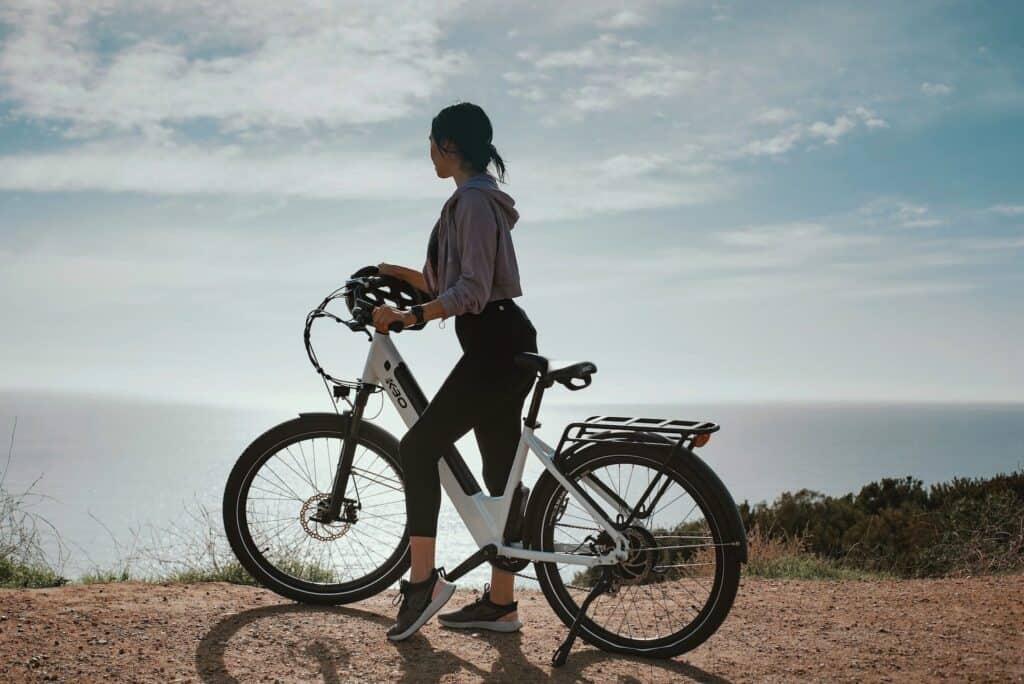
Motors are usually placed in the bike’s front, center, or rear hub. Most bikes have motors between the cranks at the bottom bracket or the rear wheel’s hub (typically found in cheaper models).
This position is favored as the motor integrates with the bicycle gears, leading to better control and traction.
Motors on the front hub are uncommon as they aren’t very popular and again, are found in cheaper models.
High-end bikes feature motors attached to the frame near the center, close to the bike’s center of gravity.
This position stabilizes the bike and provides a better riding experience.
The Battery
The second important component of an electric bike is its battery.
The battery is the motor’s power source.
Earlier made with heavy lead-acid cores, electric bike batteries are now made with lighter lithium cores, but they still contribute significantly to the bike’s weight.
The battery’s capacity and working life are defined by voltage, wattage, and amp hours.
The more the voltage, wattage, and amp hours, the better the bike’s power, life, and range.
Electric bike batteries typically last between two and five years, depending on the battery type and how well it’s cared for.
Is There a Weight Limit for Electric Bikes?
Electric bikes have weight limits, typically 275–300 pounds maximum. However, certain specialized brands produce models designed for heavier cyclists (capable of accommodating up to 550 pounds) and cargo.
Why is it important to follow a weight limit for electric bikes?
For several reasons:
- Battery Life: Overloading the bike increases the strain on the battery, significantly decreasing its life.
This means that even if your bike battery charges to 100%, you’ll get less than 100% use from it due to the decreased battery life. - Wears Down the Brakes: Overloading the bike will also lead to the brakes wearing down, damaging the various components of the braking system, and making the bike highly unsafe to ride.
Brakes are necessary to slow down, stop the bike, and avoid accidents and collisions. - Speed and Performance: the most efficient way to make something faster is to make it lighter.
Excess weight on the bike will slow it down and reduce its performance, decreasing its maximum speed, as it stains the motor and its controller.
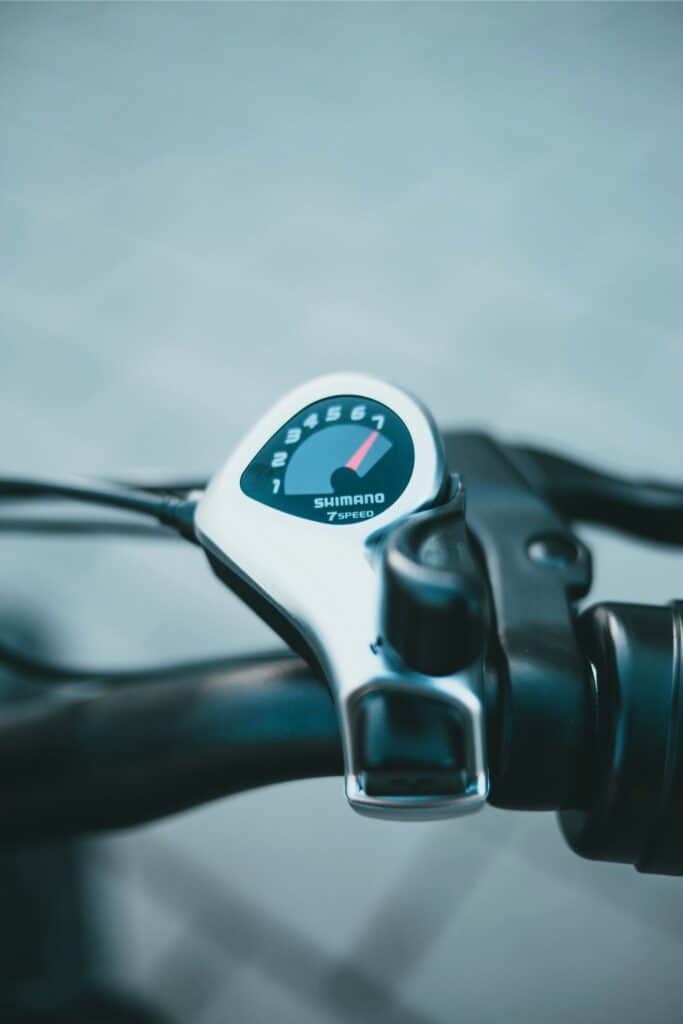
Overloading the bike will make climbing steep surfaces and rough terrain harder. Such stress could also lead to the motor’s premature degradation.
- Stress on Other Components: Apart from the abovementioned components, overloading the bike can also place excessive stress on parts such as chains, gears, saddles, rims, wheels, and handlebars.
Simply put, your entire bike is at a huge risk of premature wearing out if constantly overloaded.
Remember—when we’re talking about weight, we’re not just about body weight. It’s important to also factor in the weight of additional objects you may be carrying, such as your groceries, backpack, or any other cargo you might be carrying.
Electric Bike Choices for Heavy Riders
If you’re looking for a bike with a capacity of over 225 pounds, don’t be discouraged! Fortunately, several brands engineer specialized bikes for heavier riders.
Some popular brands include:
| Brand | Capacity (pounds) |
| Zize Bikes | 550 |
| Rad Power Bikes | 350 |
| Juiced Bikes | 300 |
| Cyrusher | 330 |
| Lectic | 330 |
| Lectic | 330 |
| Aventon | 400 |
| Ariel Rider | 300 |
| Biktrix | 300 -380 |
| Ride1Up | 300 |
| Himiway | 400 |
Buying the Right Electric Bike
There’s no denying it—an electric bike will be expensive.
When you’re spending upwards of $2,500 for an electric bike, you want to assure that it’s of the best quality that money can buy and will last you for the long run!
Apart from thoroughly researching the product you intend to buy, knowledge of a few important factors can help you make the right choice.
Weight Capacity
For heavier riders, looking at the bike’s weight capacity is crucial.
As we discussed earlier, overloading your bike will place unnecessary stress on it, flushing the thousands you spent on it down the drain by way of damages or possibly entailing more expenses by repairs.
Standard bikes can support up to 100 pounds, but a minimum capacity of 300 pounds is recommended for heavier riders.
If you’re going to use your bike to carry additional cargo, factor this in, too, before deciding on the final weight capacity.
Your Needs
What are you going to use your bike for the most?
Are you going to use it for daily grocery runs?
Do you intend to climb mountains on your bike?
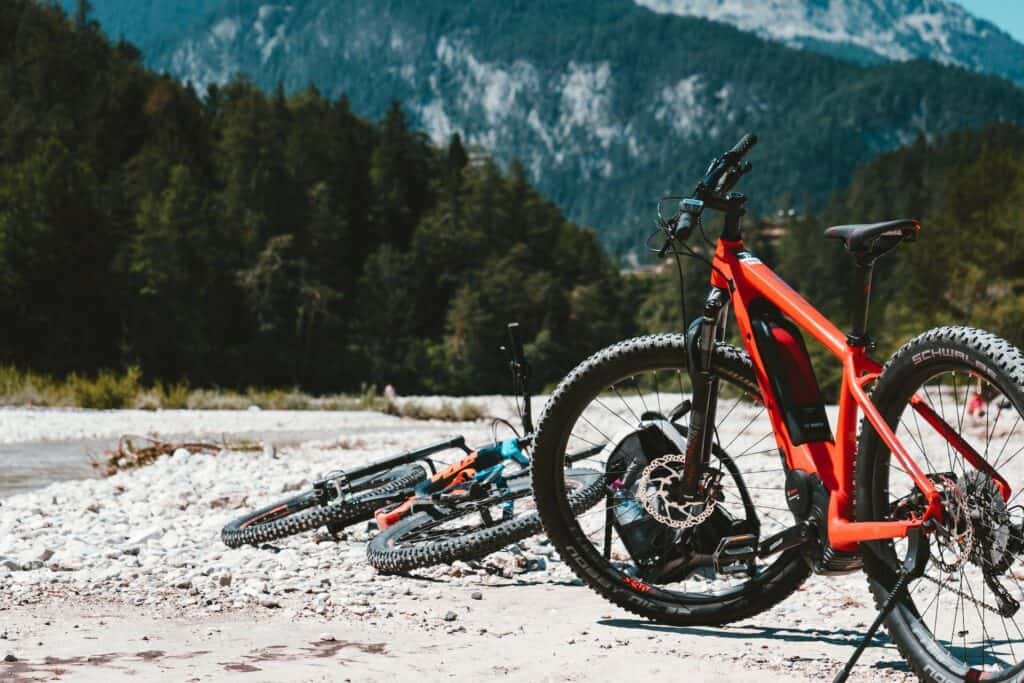
Or are you going to travel long distances on your bike?
Choose your bike based on what you will frequently use it for.
For long distances, heavy loads, and hilly and rough terrain, bikes with a wattage of over 450 are recommended, while for short, flat distances and light loads, 250 watts will suffice.
Bike Class
As we saw earlier, electric bikes are divided into three classes. This is based on regulatory reasons, the level of motor assistance, and ease of access to the cycle.
Here’s a lowdown of each type:
- Class 1: Class 1 bikes are best for beginners and new riders. These are the most common type of bikes and are meant for bike paths and streets.
They’re also allowed on many bike trails, including mountain trails.
However, the speed of this category of bikes is limited to 20 miles per hour, with the pedal-assist feature. - Class 2: Class 2 bikes are also limited to 20 miles per hour but feature a throttle that can single-handedly move the bike.
These bikes can be used in all the places that class 1 electric bikes are used in and are the class of choice for many heavier riders. - Class 3: Class 3 bikes are the fastest and most powerful of the lot, reaching 28 miles per hour with pedal assist and 20 miles per hour per throttle.
These bikes can be used on conventional bike trails but are restricted on most other bike paths and mountain trails.
Class 3 bikes are also the most expensive of the lot, but many people favor them because they make quick work of inclines and heavy loads.
Pick out a bike based on your needs, the local access rules, and the pros and cons of each class.
If there are areas you plan to frequent, it’s a good idea to check the access rules with the land managers.
Battery Capacity
Also known as the range, battery capacity is essential in electric bikes as it will define how far you can go on one single charge.
Additionally, consider how easy it is to charge the bike’s battery—batteries need to be removed from the bike and then charged, so you may also want to think about how to store and charge your batteries.
The Bike Frame
For heavier riders, frames made of aluminum and steel are the best.

If you have the budget, you can even go for titanium, as it’s stronger and more stable than the other two.
Avoid carbon fiber; though it’s strong, it can’t compare to aluminum, steel, or titanium.
Besides the frame’s material, consider whether it allows you to ride in a relaxed, natural position.
Especially while traveling long or challenging distances or carrying heavy loads, being uncomfortable can throw you off, compounding any stress that the external factors induce.
Ideally, you want a seat or saddle close to the bike’s front and handlebars that are placed high, so you’re not contorting or extending yourself unnecessarily to reach the handlebars from your seat!
Also, ensure that the wheels are sturdy and thick enough to take the relevant load.
Safety
Safety is of utmost importance in an electric bike.
Whatever model, weight capacity, or class you choose, ensure that the bike has been tested and conforms to local and national safety standards.
Look for safety certification. Additionally, buy from a reputed brand, as you’re assured of quality and redressal in case of any defects or quality issues.
Warranty
Protect your (sizeable) investment with a warranty.
Your bike will easily cost you between $1,000 and $5,000, so make sure that the brand you’re buying from gives you a good warranty deal (at least two years).
A great thing to do before you buy your bike is to test ride it.
This will let you get a feel of the bike instead of relying solely on reviews (which may only sometimes be reliable).
During the test ride, see how you feel.
How does the bike respond to different terrain?
Does it fit you well?
How easy is it to handle and maneuver?
A test ride should be able to answer most, if not all, of these questions.
Additional Questions You Might Have
1. How Heavy Is an Electric Bike?
Electric bikes weigh typically weigh between 40 and 80 pounds. The bike’s weight is influenced by the motor size, battery size, materials used, and overall bike type so some bikes may be heavier.
2. Are Electric Bikes Good for Heavy/Overweight Riders?
Electric bikes are an excellent commute option for heavy/overweight riders as they present a way to get fit without excessive stress, thanks to the support of an electric motor.
3. What If You Push the Weight Limit on Your E-bike?
Pushing the weight limit can damage the bike, causing the rims, saddles, spokes, and brakes to wear down and eventually stop working. The speed and range also get significantly lowered.
4. Are Electric Bikes Heavy?
Electric bikes are much heavier than regular bikes. Even the lightest model is around 23 pounds, which is 5 pounds heavier than a standard bike. Standard electric bikes weigh thrice than regular bikes weigh.
5. How Big Are the Motors and What Does It Mean?
Bike motors weigh between 6.6 and 8.8 pounds with a wattage between 250 and 1500. Bigger motors are more powerful but can drain your battery and leave you with less range.
6. How Far Can I Go on a Fully Charged Battery?
You can travel between 25 and 45 miles with a fully charged 250-watt battery, depending on the speed and power used, rider’s weight, electric bike weight limit, and riding conditions.